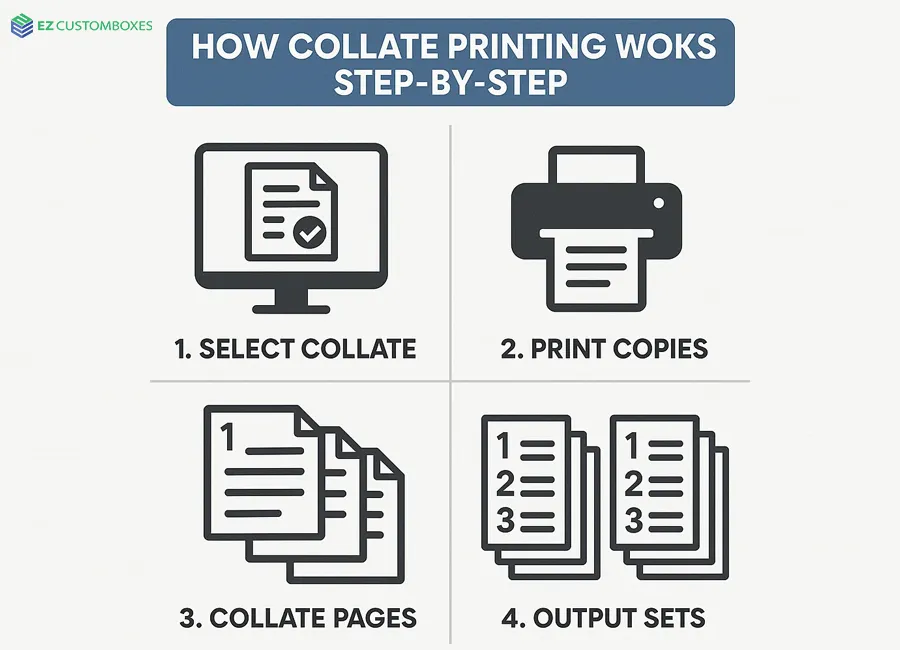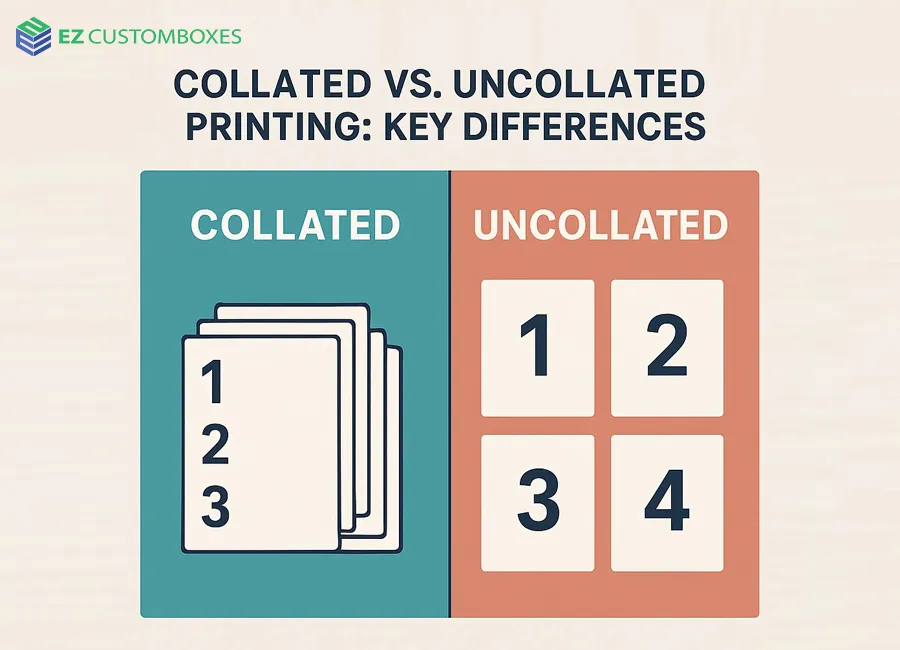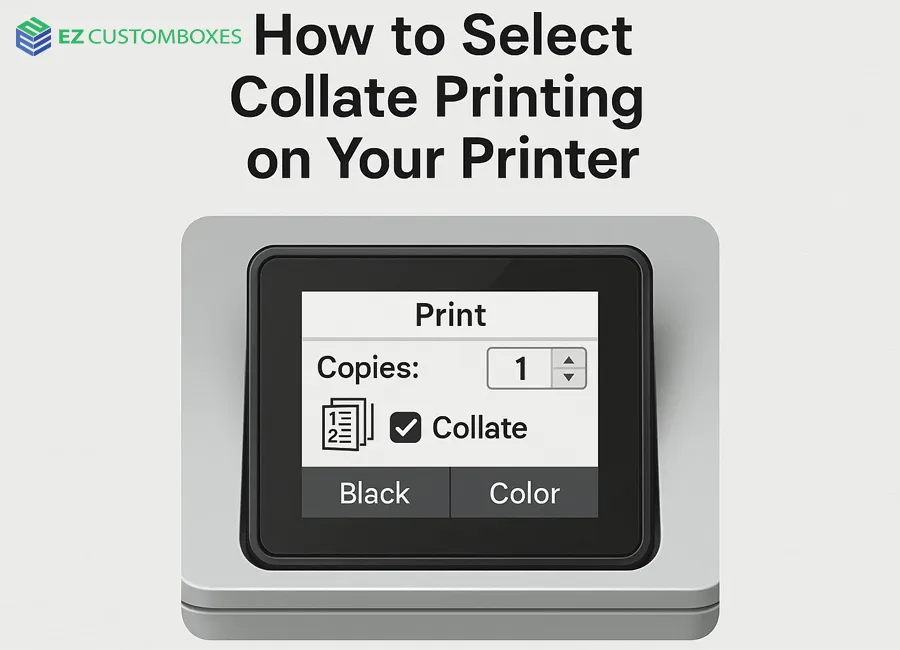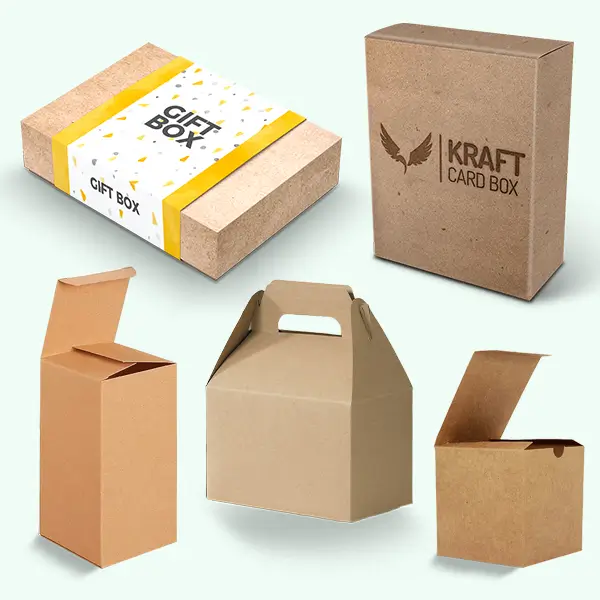Collate printing is the process of organizing multi-page documents in their correct sequential order when printing multiple copies. If you print an uncollated document with multiple copies, all copies of the first page print, followed by all copies of the second page, and so on. If you print a collated document, each complete copy of the document (pages 1, 2, 3, etc.) prints before the next one begins. Collate printing is a term often encountered in the world of document production. But what does it mean? Understanding this concept can greatly enhance your printing efficiency. In simple terms, collate printing involves arranging multiple copies of a document in a specific order. This ensures that each set of pages is printed in sequence, ready for immediate use. The process is crucial for maintaining the correct order in reports, booklets, and presentations. Without it, you might end up with a jumbled mess of pages. Collate printing is a feature available in most modern printers. It can be easily selected in the print settings, saving you time and effort.
Collate Printing Definition: What Does It Mean?

Collate printing refers to the method of organizing documents in a predetermined sequence. This ensures each print job mirrors the original order of pages. The term "collate" comes from the Latin word "collatus," meaning to bring together or arrange.
Imagine printing a report or a booklet with several pages. Without collating, each page would need sorting manually post-printing, consuming time and adding potential for error. With collate printing selected, each set automatically follows the correct sequence.
To visualize, consider printing three sets of a four-page document. With collate on, the printer outputs the pages as 1, 2, 3, 4, then repeats this sequence. When not collated, the printer outputs all page 1s first, all page 2s next, and so forth.
Key Features of Collate Printing:
- Organized Sequence: Pages appear in intended order
- Time-Saving: Reduces manual sorting
- User Convenience: Immediate distribution readiness
Collate printing streamlines document handling, making processes less burdensome. This feature is vital for ensuring every print job matches intended arrangements.
How Collate Printing Works: Step-by-Step

Understanding how collate printing works helps ensure correct document arrangement. Here is a step-by-step explanation of the process.
First, during printing setup, locate the collate option in your printer's settings. This feature is typically available in the print dialogue box of most software applications.
Next, once the collate option is selected, the printer organizes pages in sequence before printing. This means each set of documents comes out complete in one batch, with pages arranged in proper order.
Here’s a concise breakdown of the steps:
- Access Print Settings: Find the collate option.
- Select Collate: Ensure it is active.
- Print Document: Observe how pages order correctly.
Lastly, the final printed product requires no manual rearrangement. It emerges from the printer ready for immediate use, saving both time and effort. This approach is particularly useful for multi-page documents and presentations.
Collated vs. Uncollated Printing: Key Differences

Choosing between collated and uncollated printing impacts how documents appear post-printing. Understanding these key differences is essential for effective document management.
Collated printing arranges documents in complete sets. Each set includes all pages in correct order, such as 1, 2, 3, 4. This method is ideal for reports, presentations, and booklets that require immediate distribution.
Uncollated printing, however, involves printing all copies of a single page before moving to the next. For example, it prints all page 1 copies before printing page 2. This is beneficial when handling large batches or individual pages with separate purposes.
Here’s a simple comparison:
- Collated Printing: Produces complete sets in order.
- Uncollated Printing: Produces separate page batches.
Additionally, the choice depends on the task. Collated printing suits complete documents, while uncollated is useful for flyers or forms. Understanding these options allows for choosing the best method for each print job.
When Should You Use Collate Printing?
Collate printing is ideal for tasks requiring multiple complete document sets. Each set will be in sequential order, ready for direct use. When organizing reports or handouts, collate printing saves sorting time.
Consider using collate printing for educational materials. Students benefit from receiving well-organized notes, making this method especially useful for teachers and professors. It ensures every student has access to complete sets, supporting effective learning.
For meetings or presentations, collate printing provides professional-looking materials. Attendees can follow along easily, as all documents are pre-sorted and ready for reference. This enhances clarity and engagement during discussions.
To decide when to use collate printing, consider these scenarios:
- Multiple copies of a single document are needed.
- Time is limited for manual sorting.
- Professional presentation of documents is required.
Each situation above highlights the convenience and efficiency of collate printing. This method supports not only document order but also enhances the overall workflow. Choosing collate printing can significantly ease document preparation tasks.
Benefits of Collate Printing
Collate printing offers many advantages in document management. It reduces manual labor by automating the sorting process. This saves significant time and effort, especially with large document volumes.
Accuracy in document sequencing is another key benefit. Automatic collation minimizes errors, ensuring each set is complete and in order. This is crucial for professional presentations and meetings.
Additionally, collate printing enhances efficiency in office environments. It streamlines the preparation of reports, booklets, and training materials. Employees can focus on other important tasks without worrying about document organization.
Furthermore, collate printing is versatile, adjusting to various printing needs. It supports features such as double-sided printing and stapling. Here are some benefits in a nutshell:
- Reduces time spent on manual sorting.
- Ensures correct page order.
- Enhances professional output.
Overall, understanding collate printing can vastly improve the quality and efficiency of your document handling.
How to Select Collate Printing on Your Printer

Selecting collate printing on your printer is a straightforward process. Modern printers usually come equipped with this feature. You simply need to access your print settings to activate it.
First, open the document you wish to print. Navigate to the 'Print' menu in your software application. This menu may differ slightly between applications like Word, Google Docs, or Adobe Reader.
In the 'Print' dialog box, look for an option marked 'Collate' or 'Collation'. This is often accompanied by a checkbox. Clicking this activates the feature, allowing your printer to arrange documents in order.
Many printers display a preview of your selection. This helps ensure the correct settings before printing begins. After selecting the desired options, click 'Print' to start the job.
Here’s a quick list of steps:
- Open your document and navigate to 'Print'.
- Check the 'Collate' box in the settings.
- Verify selections and begin printing.
Finally, consult your printer manual if you encounter issues. Some printers may have additional or unique steps. This ensures you make the most of your printer’s capabilities.
Common Questions About Collate Printing
Many people have questions about collate printing. It's a useful but sometimes misunderstood feature. Let's address some common inquiries to clarify its purpose.
What does it mean to collate when printing? This means arranging documents in the proper sequence. Each set contains pages in the correct order. This feature prevents manual sorting after printing.
Is collate printing available on all printers? Most modern printers offer this option. However, older models might not. Check your printer's manual to confirm availability.
Why does collating matter? It saves time and reduces errors. When dealing with multiple copies, it ensures each set is ready to use.
Here are some quick answers:
- What is collate printing?
- Does every printer support collating?
- Why use it?
Collate Printing in Digital and Professional Settings
In digital environments, collate printing enhances efficiency. Software settings allow users to select collate features easily. This is crucial for offices handling high document volumes.
Professional print services rely heavily on collate printing. It ensures high-quality output for large print jobs. Consistency and order are vital for client satisfaction.
Collate printing is beneficial across various professional fields. Graphic designers use it for cohesive presentations. Administrative staff find it handy for distributing reports. In summary, here's how it supports professionals:
- Digital Platforms: Simplifies print setup
- Print Services: Maintains quality control
- Varied Fields: Meets diverse professional needs
These settings maximize productivity and minimize manual errors, proving invaluable in professional contexts.
Tips for Efficient Collate Printing
For best results with collate printing, a few strategies can go a long way. First, always double-check your print settings. This ensures that the collate option is selected as needed.
Make sure your printer can handle the job volume. Some printers have limits, so knowing these can prevent errors. Prepare digital files in advance to streamline the process.
Using quality paper reduces jam risks and enhances print quality. Always keep your printer well-maintained to avoid issues. Proper maintenance guarantees smooth collation.
Here’s a quick guide to efficient collating:
- Verify print settings beforehand
- Be aware of printer capacity
- Use high-quality paper
- Keep the printer well-maintained
With these tips, you can achieve hassle-free and efficient collate printing every time.
Conclusion: Why Understanding Collate Printing Matters
Understanding collate printing plays a significant role in efficient document handling. It ensures that multi-page documents remain organized with minimal effort. By using collate printing, both time and effort can be saved, especially in busy office settings.
Choosing the correct print settings avoids mix-ups and guarantees well-arranged documents. Whether for professional use or personal projects, familiarity with collate printing is essential. This knowledge ensures prepared documents are distributed neatly and effectively, improving overall productivity and accuracy in any work environment.
Do I want to collate when printing?
Answer:
It depends on the type of document you’re printing. If you're printing multiple copies of a multi-page document, collating helps organize them in the correct order (page 1, 2, 3, etc.) for each copy. If you need each copy to be in sequence, then yes, collating is usually the preferred option. For simple documents or single-page prints, collating may not be necessary.
What happens if I don't collate?
Answer:
If you don't collate, the printer will print all the copies of the first page, followed by all copies of the second page, and so on. This means you’ll get a stack of individual pages that aren't in the correct order for each document. You'll have to manually organize the pages into complete sets, which can be time-consuming, especially for large print jobs.
What is collated vs uncollated printing?
Answer:
-
Collated printing means printing multiple copies of a multi-page document in the correct order. For example, if you’re printing three copies of a five-page document, you will receive three complete sets of pages (Page 1, Page 2, Page 3, etc. for each copy).
-
Uncollated printing means the printer will print all the copies of each page first, so you would get a stack of all the copies of Page 1, followed by all the copies of Page 2, and so on. You would have to manually sort them afterward.
Is collated the same as double-sided?
Answer:
No, collated and double-sided are not the same.
-
Collated refers to the order in which pages are printed and organized (for example, printing pages in sequence).
-
Double-sided refers to printing on both sides of the paper (duplex printing). You can have collated double-sided printing, meaning pages are printed in order on both sides of each sheet of paper.
What is an example of collate?
Answer:
An example of collating would be printing 5 copies of a 3-page document. With collated printing, you would get five complete sets, each consisting of Page 1, Page 2, and Page 3 in that order. Without collating, you would get 5 copies of Page 1, 5 copies of Page 2, and 5 copies of Page 3 — all mixed together, requiring manual organization.
What is two-sided printing called?
Answer:
Two-sided printing is called duplex printing. It allows both sides of the paper to be printed on, saving paper and reducing the number of sheets needed for a document.
What happens if I select collate?
Answer:
If you select collate, the printer will print your document in sequential order for each copy. For example, if you’re printing 3 copies of a 4-page document, you’ll receive three complete sets of pages (1, 2, 3, 4) in that order. This option is particularly useful when printing reports, booklets, or any document where maintaining the page sequence for each copy is important.

Ethan Robert works at EZ Custom Boxes as their digital marketing manager. Having a solid background in SEO, content strategy, and eCommerce growth, he specialises in using creative packaging content and data-driven campaigns to drive online visibility and brand interaction.












